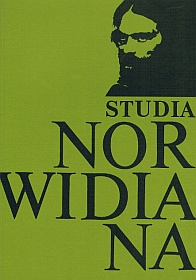Salvator Rosa – another Norwid’s seventeenth century inspiration
Abstract
Reflection on Norwid-the magician, poet and artist at the same time, makes one ask the question about possible sources of inspiration. One of such sources that has been missed until now, is constituted by the works of Salvator Rosa (1615-1673) – the Italian painter, engraver, writer and actor. Forgotten already at the end of the 17th century, Rosa was rediscovered by English travelers and art collectors at the break of the 18th century and interpreted as a forerunner of Romanticism.
Norwid's mentions of Rosa – contained both in his poems and letters – allow distinguishing four aspects of the baroque artist’s work that made him close to the Polish poet. The literary aspect seems to be the most important; Norwid highly valued Rosa's Satires because of the attitude of creative freedom and reflection on art that is manifested in them. Secondly, he admired his role as an animator of artistic and intellectual life in the 17th century Florence (Accademia dei Percossi confraternity). Thirdly, he pointed to the variety of the Italian's artistic talents and occupations – to his being a ‘magician’. And finally, he noticed an analogy to his own situation in Rosa’s conflicts with the critics.
Among the Norwidian artistic motifs whose form points to inspiration with Rosa’s works two are of special interest: the motif of melancholy in his fine arts works (lithography Solo) and the poetical reflection on silence.
Copyright (c) 2005 Studia Norwidiana

This work is licensed under a Creative Commons Attribution-NonCommercial-NoDerivatives 4.0 International License.





